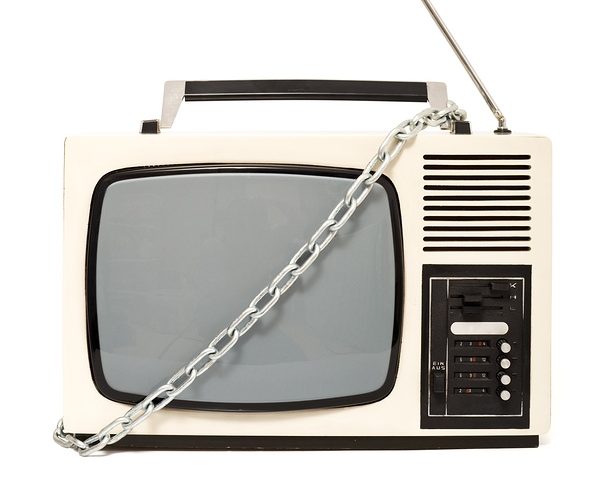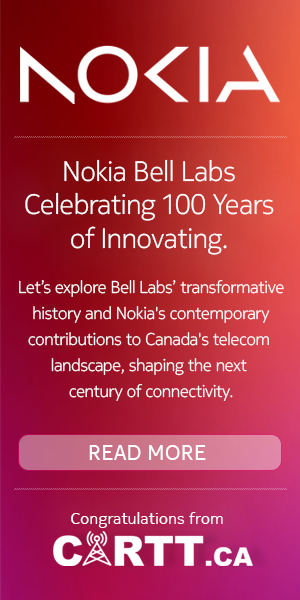
I FINALLY HAVE A RESPONSE to something CRTC chairman Jean-Pierre Blais asked we reporters – in absentia, mind you – during day eight of September’s Talk TV hearing, the day set aside for accessibility issues.
“I asked others beforehand – now they may be listening elsewhere – but the media table, which was chock-a-block last week, seems to be completely empty now,” chairman Blais said on September 17th. “And I'm struck, because members of the community you serve presumably buy goods and services – goods and services that are made by people that advertise in newspapers and other electronic media.
“Why does this not seem to be interesting to people to cover, even though we've set an entire morning on this issue?”
Watching the hearing that morning from my office on the very useful CPAC.ca feed, I immediately felt badly for not being there in person right then. After all, the issues facing blind, low vision, deaf, hard of hearing, and other physically disabled Canadians when watching TV are far different and much more challenging than those of us who are able-bodied.
Why didn’t I stay in Ottawa for that day as well? We did cover the day with a story, of course, but we weren’t there to hear first hand, for example, Paralympian Shawn Marsolais talk about what it’s like for a blind Canadian to try and consume media made for a sighted world.
However, not until I was preparing for a panel session at last week’s Innoversity 2014 conference did it dawn on me that we press folks were not the only ones at fault for the lack of coverage. The panel was called “Accessibility in the Media – Who Cares?” A tough question – and my assignment was to try to explain why the media wasn’t in the CRTC hearing room that day in September.
I understand the criticism that we in the media don’t pay enough attention to accessibility issues in media, but I now have a question for the chair: Why were all accessibility groups, all accessibility issues and questions scheduled and saved up for day eight? Why wasn’t Accessible Media or Vues & Voix or Media Access Canada or Cindy Ferguson or Descriptive Video Works and Marsolais (the founder of Blind Beginnings, a non-profit organization that guarantees quality of life for children and youth who are blind and partially sighted) scheduled to appear the same day as Bell or Rogers or Shaw or CBC or Corus or Quebecor?
I’ve been a working reporter for a long time and I guarantee that if the accessibility-focused groups and individuals were peppered throughout the schedule, they would have received far more attention with multiple exposures than to just drop them all in on a single day. There were some compelling stories told September 17th.
If I can paraphrase one of my co-panellists, author and advocate Donna Jodhan, blind Canadians and others with physical disabilities have a lot to offer and want to be included in mainstream life. They don’t want to be shuffled off to the side and therefore don’t really want an accessibility day in the CRTC program. They want and deserve to be in the mix with everyone else so they can be heard when the biggest audience is there in the hearing room.
"They want and deserve to be in the mix with everyone else so they can be heard when the biggest audience is there in the hearing room."
And, it’s not like these folks are hiding. They are out there, trying to get noticed. Leesa Levinson, the executive director of Lights Camera Access and artist Adam Roy Cohoon both approached me after the panel to tell me what they’re up to and how hard they’re working. Levinson’s group tries to connect people with disabilities “an invisible presence in the Canadian media,” says the web site to employment opportunities in Canada’s entertainment, arts and digital media industries. Cohoon is an access advocate with his own Youtube channel well worth watching (would you take to Toronto’s streets in a wheelchair after a snowstorm? Check out the news footage shot with the GoPro anchored to his chair.)
We able bodied people in the media don’t do a very good job reflecting the lives of disabled Canadians. They are not on television very much at all and omissions in serving the blind especially, are commonplace, like TV channels falling too much in love with news graphics – and never reading out loud what important news alert might be there. According to the CNIB, there are 500,000 Canadians living with significant vision loss and 5.5 million with major eye disease which could cause vision loss. These aren’t small numbers. 500,000 is the population of Hamilton, Ont. and those TV users deserve more and better described video, which has grown thanks to CRTC mandates, but is done best by AMI, a channel which certainly deserves its must-carry status and which will launch in French in December.
Some media companies do it better than others, of course, and there is now a new funding opportunity coming soon. The long-awaited Broadcasting Accessibility Fund, a $6 million fund established as part of the benefits package way back when Bell Canada bought CTVglobemedia is set to launch this fall, said executive director Richard Cavanagh, another of my fellow Innoversity panelists.
According to the CRTC decision okaying the fund, the BAF’s mandate is to:
- Act as an independent and impartial funding body to support and fund innovative projects that provide platform-neutral solutions to promote accessibility of all broadcasting content in Canada.
- Fund only projects that are incremental to the existing regulatory obligations of the broadcasting industry in Canada.
- Fund projects which provide practical solutions that tangibly increase accessibility in broadcasting as quickly as possible and which, whenever possible, make use of inclusive design principles to promote accessibility at the earliest stages and in the most cost-effective manner for new technologies and applications in Canada.
Let’s hope we see some innovation not only coming from this fund, but from all broadcasters, to better reflect the lives (on air and behind the scenes) of a minority group which any of us could end up joining – at any time.



